Everyone knows the legends like the 426 Hemi or Chevy’s 350 small-block, but what about the unsung heroes quietly powering our cars and trucks through the decades?
These engines span all eras – from the early 1900s to today – and while at least 13 of them were built in the USA, we couldn’t resist including a few noteworthy foreign mills that deserve recognition.
1. Ford Model T Four-Cylinder (1908–1927)

Vehicles: Ford Model T (the car that put the world on wheels).
Why It’s Underrated:
With just 20 horsepower, the Model T’s 2.9L inline-four might seem puny now, but it was ingeniously simple and reliable. It had no fuel pump or water pump. It used gravity to feed the carburetor and a thermosiphon effect to circulate coolant. This simplicity made it extremely robust and easy to fix on the farm or roadside.
Legendary Adaptability
- The Model T engine shared oil with its transmission and could run on gasoline, kerosene or ethanol, now that’s Flex Fuel!
- Farmers often used retired Model T engines to power sawmills, pump water, or run other machinery. It might not win races, but this little four-cylinder was the dependable workhorse of the early automotive era, and was forgiving enough to get a whole Country on wheels.
2. Ford Flathead V8 (1932–1953)
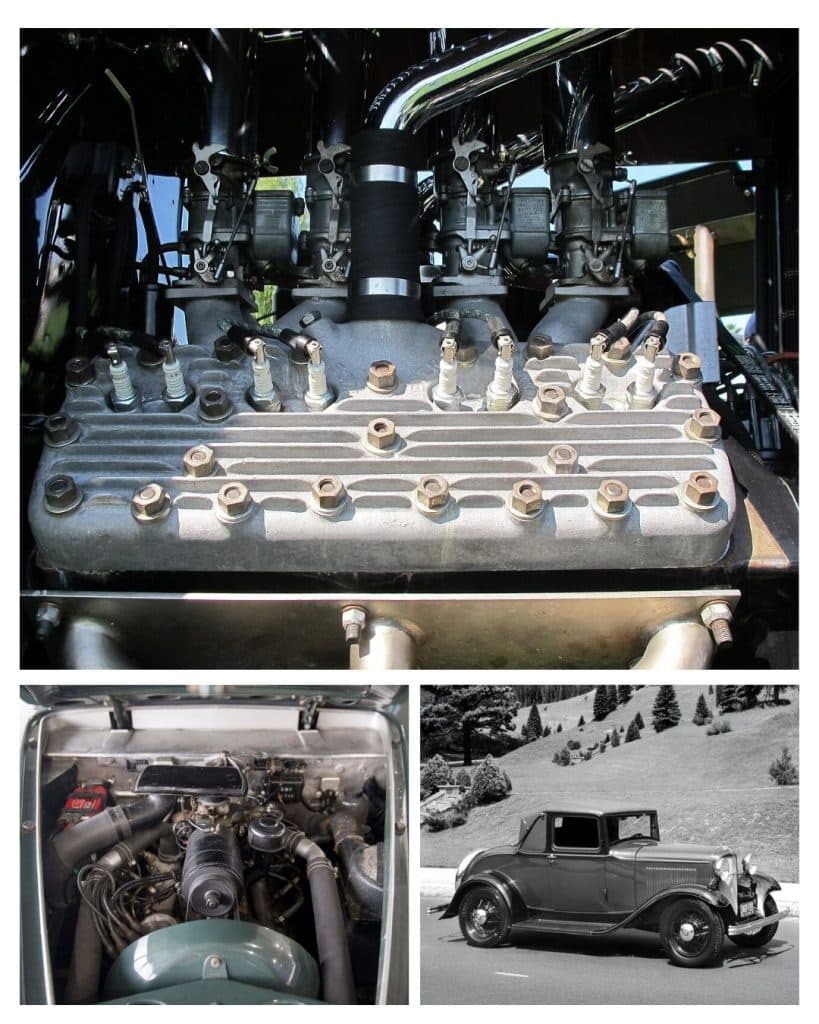
Vehicles: 1932 Ford “Model 18” (the first Ford V8 car), plus Ford trucks and cars through the ’30s and ’40s.
Why It’s Underrated:
This was the world’s first affordable V8 engine, bringing V8 power to ordinary drivers for the first time. It’s often celebrated in hot rod circles, but many forget just how revolutionary it was. The Flathead’s side-valve design limited breathing, so it wasn’t a powerhouse by modern standards – yet it delivered smooth torque and proved incredibly durable. It remained in production over 21 years, outlasting even the Model T’s run.

Simple, Easy to Work On, The Hot Rodders’ Choice Before the SBC
- It had only three main bearings supporting the crank (most V8s use five), a quirky design that still worked fine.
- Hot rodders in the 1950s went nuts over Flatheads – it was the engine of choice for early drag racing and salt flats runs, before newer overhead-valve V8s took over.
3. Buick “Fireball” Straight-8 (1931–1953)
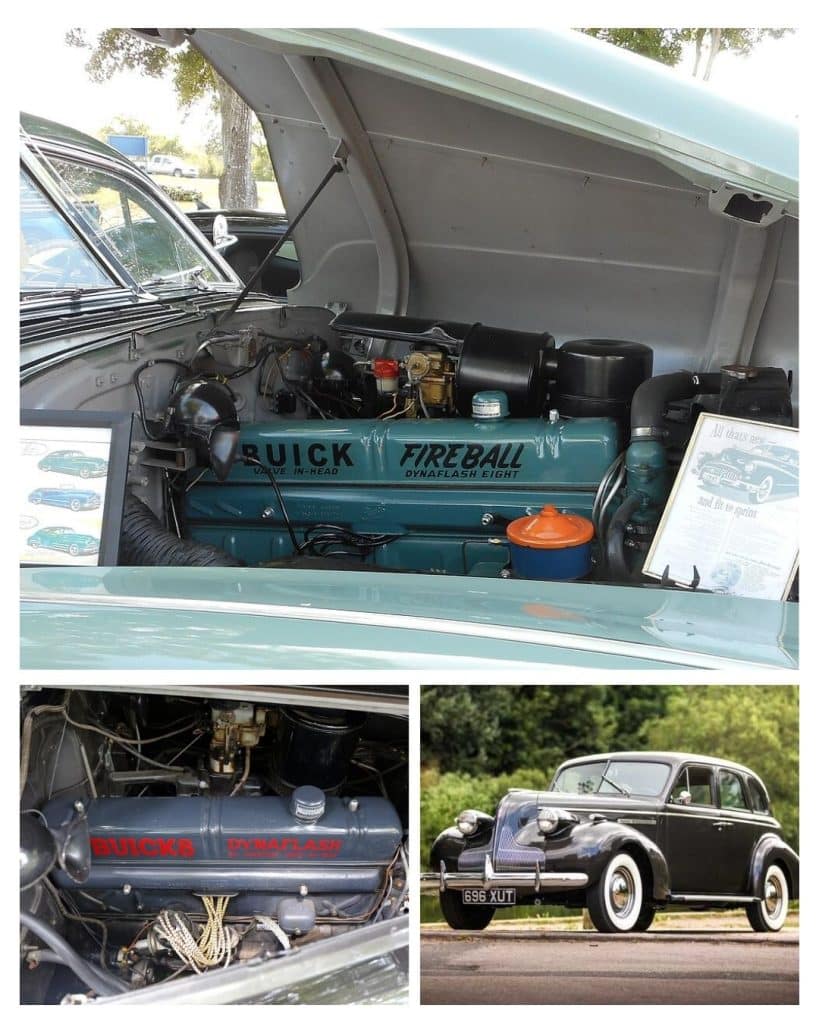
Vehicles: Buick Series 40 Special, Roadmaster, and other full-size Buicks in the 1930s-50s.
Why It’s Underrated:
In the pre-V8 era, many American cars used long inline-eight engines. Buick’s overhead-valve Straight-8, nicknamed the “Fireball 8,” was among the best. It provided utter smoothness and gobs of low-end torque, establishing Buick’s reputation for torquey engines. Yet it’s often forgotten today, overshadowed by the small-block V8s that came later. The Straight-8 wasn’t built for high revs or racing, but it was silky and robust, ideal for the heavy, luxurious Buicks of its time.
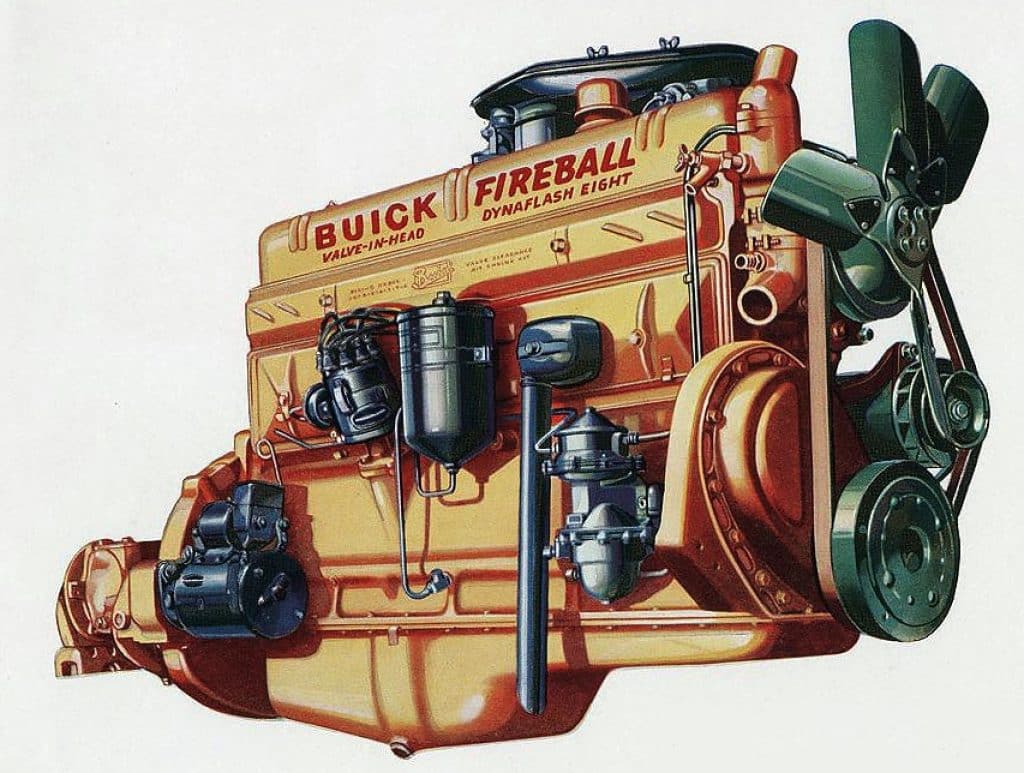
The Smooth As Silk Torque MONSTER
- Buick made their Straight-8 in multiple displacements over 23 years, with power ranging roughly 75 to 170 hp – modest now, but just fine then.
- These engines were so sturdy that a Buick Straight-8 powered a racer in the 1931 Indianapolis 500, finishing 12th.
- By the 1940s, Buick even offered “Compound Carburetion” on this engine for extra power.
4. Buick Nailhead V8 (1953–1966)
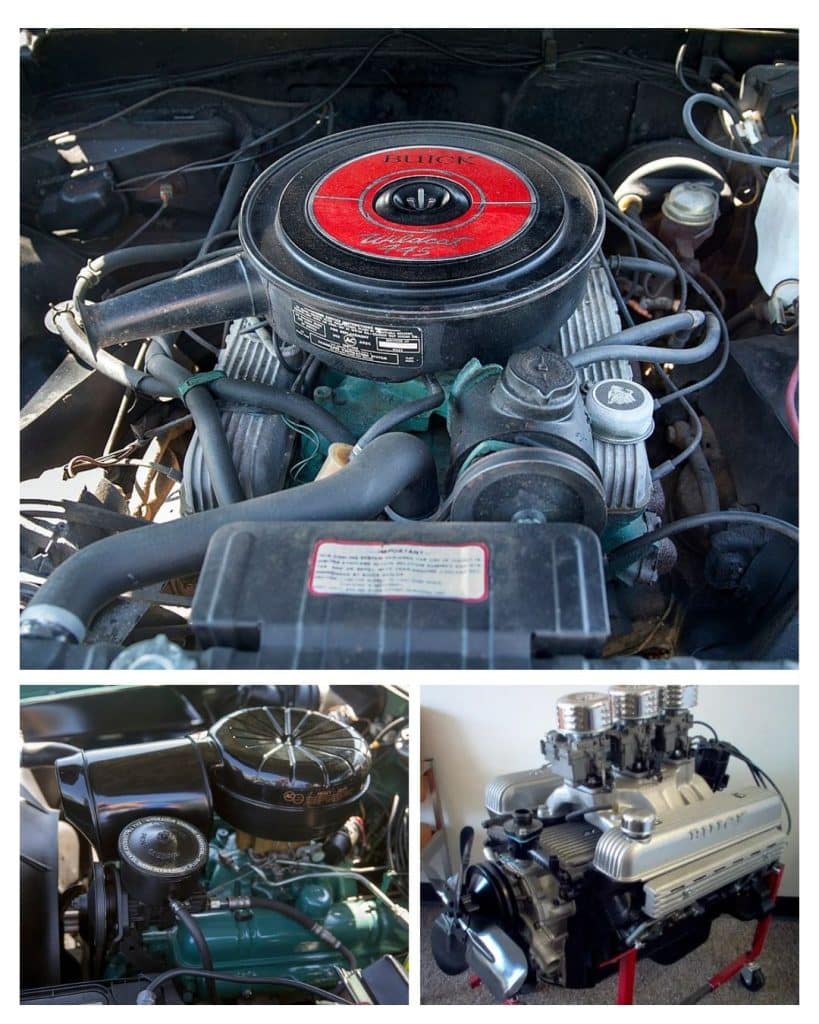
Vehicles: Buick Special, Century, Riviera, Wildcat, and other Buicks in the ’50s and ’60s.
Why It’s Underrated:
Buick’s so-called “Nailhead” V8 was a radical departure from its straight-8 lineage. This 90° OHV V8 got its nickname from its unusually small, vertically mounted valves, which looked like nails and slightly restricted airflow. While that meant the Nailhead didn’t breathe as freely as some competitors (limiting high-RPM power), it delivered mountains of torque. In fact, many Nailhead versions achieved over 1 ft-lb of torque per cubic inch, an astronomical feat in its day. It served as Buick’s workhorse V8 for over a decade, but is often overlooked in favor of later big-blocks.
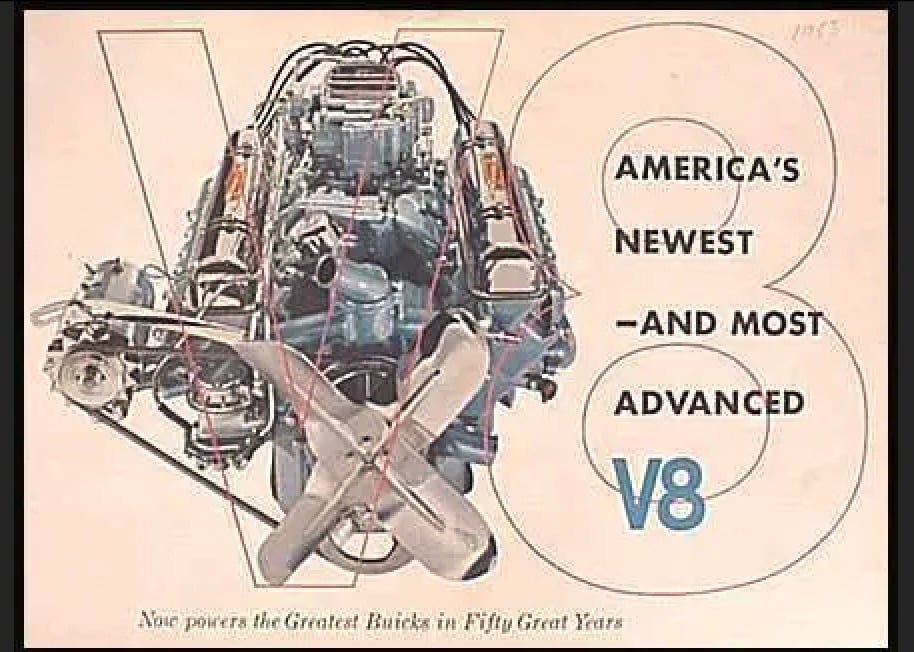
- The Nailhead was compact and relatively light for its size, which made it popular in hot rods. It could fit into early Ford hot rod engine bays with ease.
- To compensate for its small valves, Buick engineers gave it a camshaft with higher lift and longer duration, and the engines responded well to performance tweaks.
- The largest Nailhead was 425 cubic inches (found in the 1960s Wildcats and Rivieras), and even bone-stock, it was a torque monster.
5. Buick 215 Aluminum V8 (1961–1963)
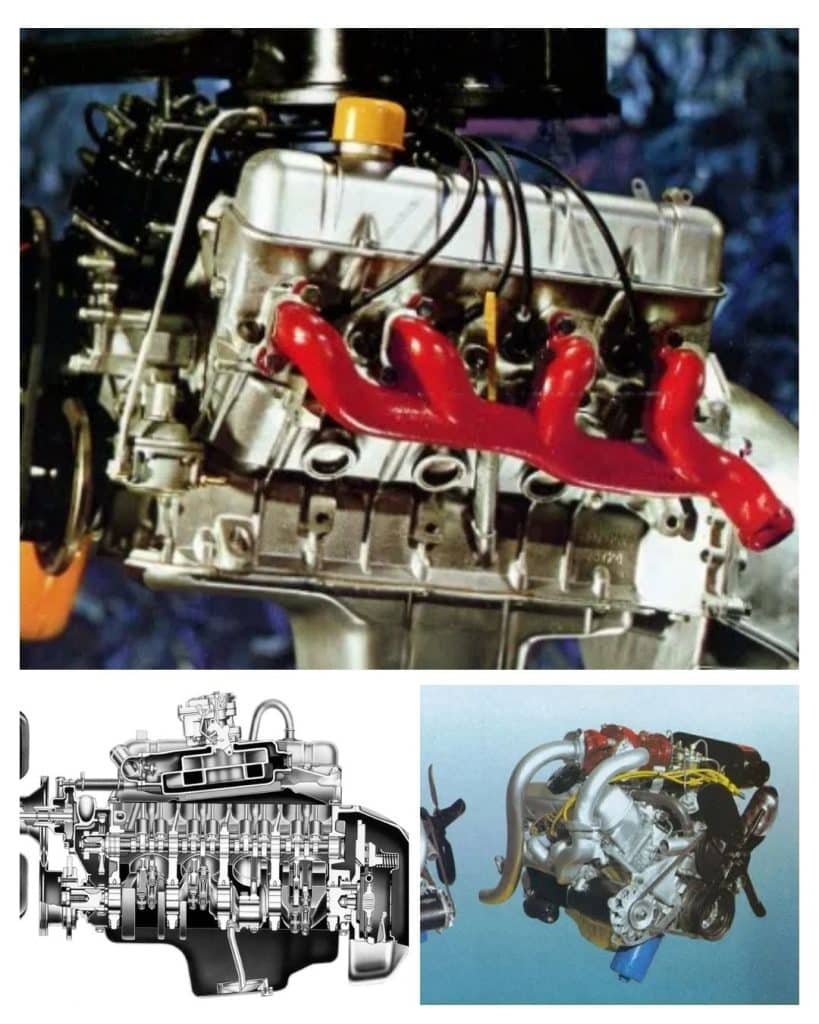
Vehicles: 1961–63 Buick Special, Oldsmobile F-85, Pontiac Tempest (and later, countless British sports cars, such as the Rover V8).
Why It’s Underrated:
Imagine an American V8 that’s all aluminum, ultra-lightweight, and ahead of its time – that’s the Buick 215. Weighing only about 324 pounds, this 3.5-liter V8 engine produced up to 185 hp and 230 lb-ft of torque, which is outstanding for its size and time. It even powered the 1962 Olds Jetfire, the world’s first turbocharged production car. Unfortunately, early production issues and cost concerns led GM to abandon it, selling the design to Britain’s Rover. The engine then enjoyed a second life powering Land Rovers, MGs, TVRs and more all the way into the 1990s.
Our Loss Was Britain’s Gain
- The Buick 215 is often called “the little V8 that powered the world.” It had a stellar power-to-weight ratio – just 1.5 lbs per cubic inch, and 2.09 lbs per horsepower, far better than any cast-iron V8 of the time.
- GM’s lack of faith became Britain’s gain: Rover built millions of engines from this design, using it in Range Rovers and even developing an F1 championship-winning engine (Repco V8) that was based on the Buick 215’s architecture.
6. Studebaker V8 (1951–1964)

Vehicles: Studebaker Commander, Champion, Lark, Hawk, and the supercharged Studebaker Avanti.
Why It’s Underrated:
Studebaker was a smaller player in Detroit, but their V8 was overbuilt like a tank. Available in sizes from 232 up to 289 cubic inches (and a rare 304), this V8 had features even the big brands lacked: forged crank and rods, a gear-driven camshaft, solid lifters, and a whopping 18 head bolts per cylinder head for extra strength. It was born to be boosted – Studebaker slapped on Paxton superchargers to create the Jet-Thrust R2 and even an R3 version that made 335+ hp, shocking for a 289-ci engine in 1963. Despite its merits, it’s largely forgotten outside Studebaker circles, overshadowed by Chevy small-blocks and Ford Y-blocks of the era.
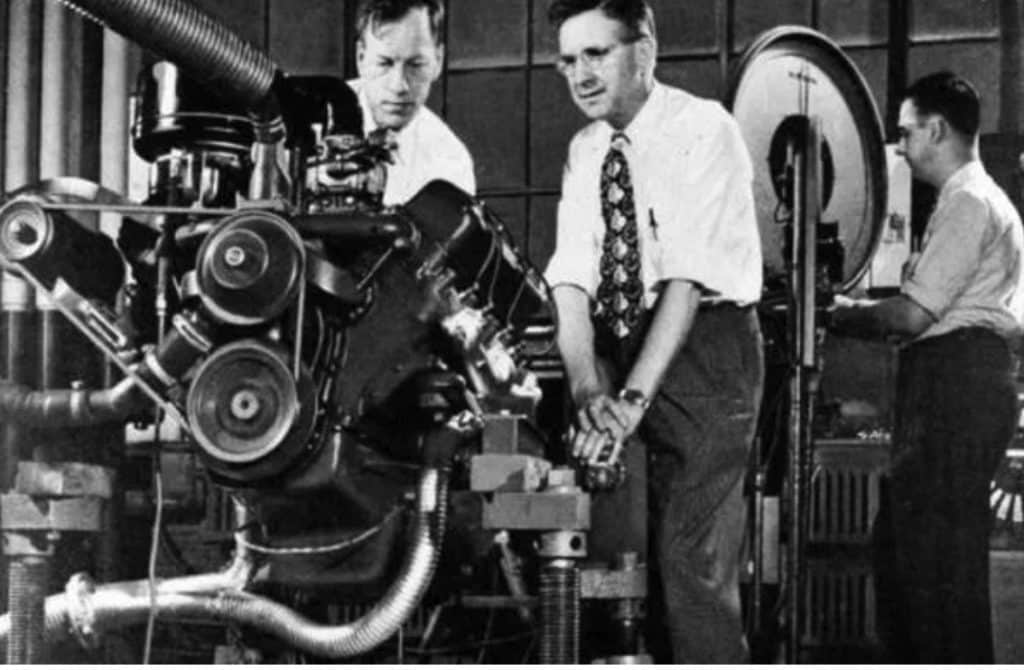
Overbuilt Durability:
- Fans call it an “unsung hero” – this V8 proved its mettle on the Bonneville salt flats and in drag racing, where blown Studebaker mills set records. A supercharged 289 R2 powered the 1963 Avanti to 170+ mph at Bonneville.
- The rugged design also made it a favorite for hot rodders swapping engines in the ’50s. Studebaker may be long gone, but those who know this engine will tell you it was as tough as they come – a true overachiever from a defunct brand.
7. Pontiac OHC “Sprint” Six (1966–1969)

Vehicles: Pontiac Tempest/LeMans Sprint, Pontiac Firebird Sprint (the rare six-cylinder Firebirds).
Why It’s Underrated:
In the heart of the muscle car era, Pontiac dared to do something radical – offer an overhead-cam straight-six when everyone else had pushrods. The 230/250 cubic-inch OHC-6, marketed as the “Sprint” when equipped with a four-barrel carb, was decades ahead of its time. It could rev to 6,500 rpm and made a respectable 215 hp (in 1967) – plenty to surprise V8s. However, cheap gas and the V8 craze meant it never caught on.

A Poor Man’s BMW?
- This was the first mass-produced OHC engine by an American carmaker since the 1930s. It featured a fiberglass-reinforced rubber timing belt (a novelty then) and even an optional hood-mounted tachometer in Sprint cars to emphasize its high-revving nature.
- Car Life magazine in ’66 called it “a poor man’s BMW” engine.
The OHC-6’s failure in the market makes it a bit of a unicorn now – a brilliantly innovative six that proved Pontiac was “driving excitement” even beyond V8s.
8. Oldsmobile Rocket V8 (Second Generation, 1964–1976)
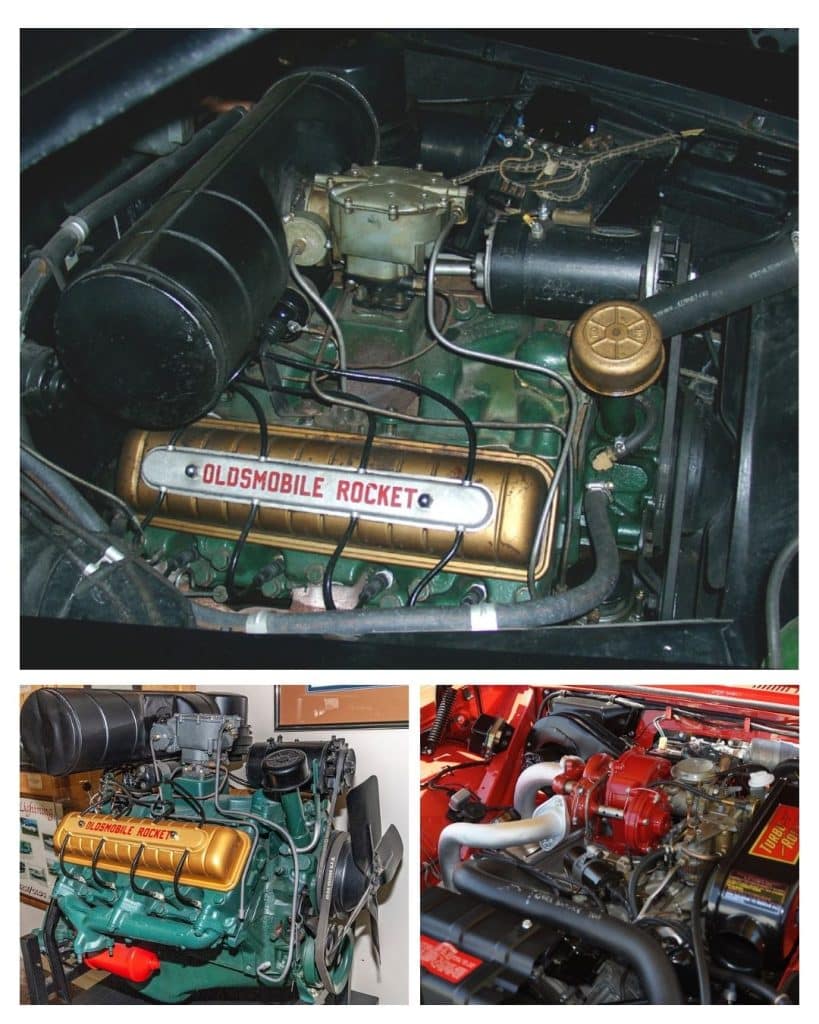
Vehicles: Oldsmobile Cutlass, 4-4-2, Delta 88, Vista Cruiser, and even some Pontiac and Buick models in the ’70s (engine sharing).
Why It’s Underrated:
Oldsmobile’s second-gen “Rocket” V8 family (330, 350, 400, 425, 455 cid) seldom gets the glory that Chevy’s or Pontiac’s V8s do, yet these engines were versatile workhorses. They powered everything from high-performance muscle cars (the 442’s 365 hp 455 in 1970) to luxury cruisers and even low-compression economy versions during the gas crunch. With a sturdy build and a tendency to produce massive torque, Olds V8s took well to hop-ups – enthusiasts discovered that a “little” Olds 350 could lay down serious quarter-mile times with the right parts. They’re underrated simply because Oldsmobile as a marque faded away, and these engines were overshadowed by Chevy’s ubiquitous small-block.
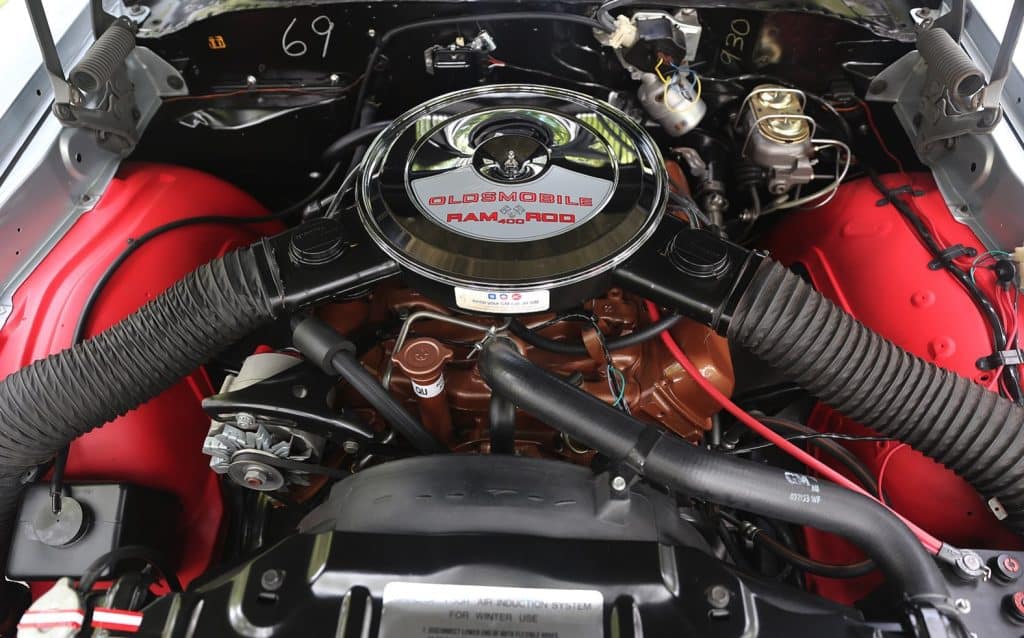
The Rocket Just Kept Chuggin’
- The Olds 455 was called “Rocket” for good reason – it made up to 500+ lb-ft of torque in stock form, enough to fling a heavy 442 down the strip.
- Oldsmobile was an unsung hero in the smog era: when other divisions’ performance V8s disappeared, Olds kept the flame by supplying 403 and 455 V8s to Pontiac and Buick in the late ’70s (for Trans Ams, etc.).
9. AMC 232/258 Inline-6 (1964–1990)
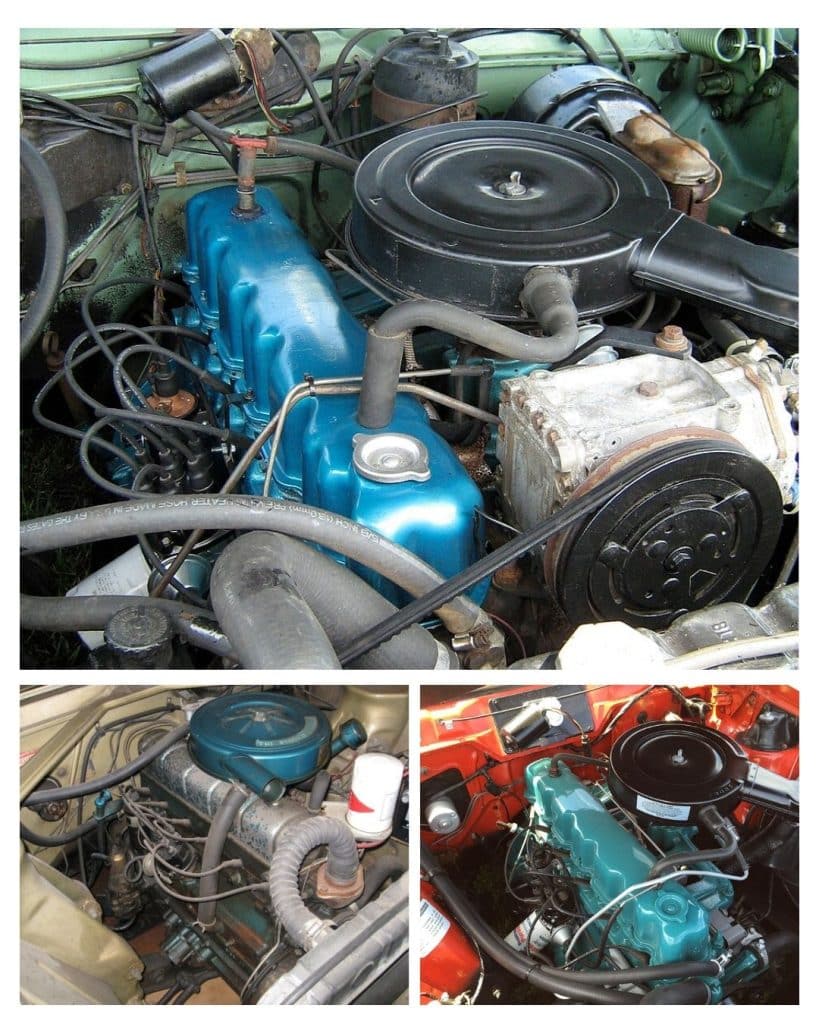
Vehicles: AMC Rambler, Gremlin, Hornet, Jeep CJ5/CJ7, Jeep Wagoneer, and 1980s Jeep Wrangler/Cherokee (as 4.2L).
Why It’s Underrated:
Often living in the shadow of its more famous successor (the Jeep 4.0L), the AMC 232/258 straight-six was the sturdy pillar of AMC’s engine lineup for decades. It started as an economy car engine and ended up powering iconic 4x4s. With seven main bearings on the crank, it was incredibly robust – perfect for low-end torque and longevity. People didn’t think of it as a performance engine, but it got the job done with little drama for 25+ years.
Simple, Reliable, and in the Shadows
- When AMC bought Jeep in 1970, they slotted the 258 right into CJs and Wagoneers – and it stayed in Jeep vehicles up until 1990. This means the same basic engine design served from 1964 all the way to 2006.
- It’s not uncommon to hear of Jeep 4.2s and 4.0s with 300k miles still running strong, thanks to that rock-solid seven-bearing bottom end.
10. Chrysler 225 “Slant Six” (1960–1987)
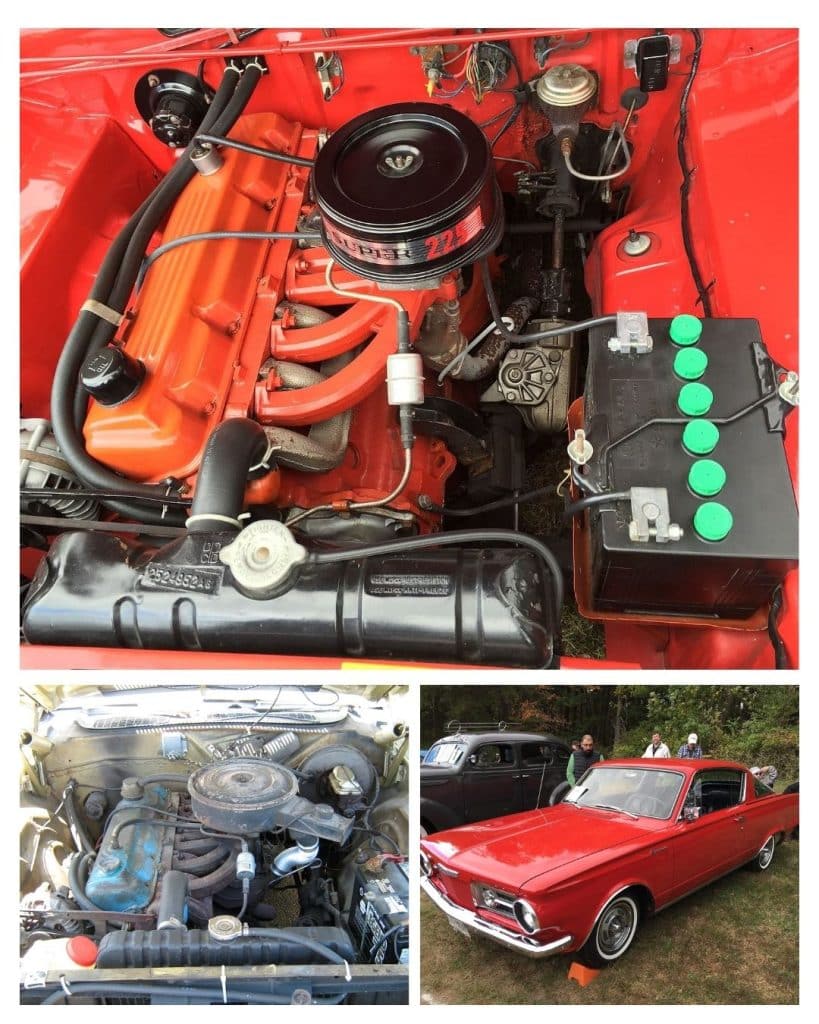
Vehicles: Plymouth Valiant, Dodge Dart, Plymouth Duster, Dodge trucks/vans, and many other Mopar models as the base engine.
Why It’s Underrated:
Nicknamed the “Leaning Tower of Power” for its 30° slanted cylinder block, the 225 Slant-6 was Chrysler’s trusty inline-six that just would not die. It often got little respect because it was usually the economy option, overshadowed by Hemi and 440 V8s. But this indestructible 3.7L six earned a cult following for its smooth torque and bulletproof reliability. It powered everything from taxis to pickups, evolving with the times (even gaining fuel injection in the ’80s) and yet is rarely celebrated. Underrated? Absolutely.
Gutless? Maybe a bit. But they just don’t quit.
- Slant-6 engines have been known to survive terrible abuse – running without coolant or oil far longer than they should
- Their inclined design allowed for a lower hoodline and a very long intake manifold for good fuel distribution.
- If you ever hear a classic Dodge start with a sewing-machine-like idle and a wheeze, you’re probably listening to a Slant-6 contentedly doing its thing.
11. Ford 300 Inline-6 (4.9L) (1965–1996)

Vehicles: Ford F-series trucks (F-100 to F-350), Broncos, Econoline vans, and even farm/industrial equipment.
Why It’s Underrated:
Often called Ford’s greatest truck engine, the 300 cubic-inch inline-six is revered by Blue Oval fans yet still doesn’t get mainstream glory. It made only aruond 100–150 hp stock, but a torquey low-end grunt that was perfect for hauling and off-roading. The 300 I6 is famous for its longevity – it’s not unusual to find one with 300k+ miles described as “runs like new.” Because it’s overshadowed by the sexier V8s (302, 351W, etc.), the 300 I6 remains a workhorse hero that never quite got the public admiration it deserves (aside from those who swear it’s “the best motor Ford ever built”).
One of the All-Time Great Workhorses
- How beloved is it? When Summit Racing polled enthusiasts for underrated engines, the Ford 300 I6 took the #1 spot thanks to an outpouring of love.
- It’s been called “tough as nails” and a “true workhorse.” One reason for its durability is an overbuilt design – forged crank and rods and seven main bearings holding that long crankshaft.
- This engine could lug a pickup up a hill in top gear at idle – try that with a high-strung V8! Ford even used modified 300 I6 engines in medium-duty trucks and generators.
12. Pontiac 2.5L “Iron Duke” I4 (1977–1993)

Vehicles: A huge variety – Pontiac Sunbird, Firebird (base), Fiero, Chevy S-10, Jeep CJ-7 (and USPS mail Jeeps!), among others.
Why It’s Underrated:
If engines had personalities, the Iron Duke would be Rodney Dangerfield – “no respect”. This 2.5L pushrod four-cylinder was loud, rough, and not very powerful (~90 hp in most trims). But what it lacked in finesse, it made up for in indestructibility. The Iron Duke would run “forever with minimal maintenance,” as one mechanic put it. It ended up in everything from sports cars to agricultural equipment, yet enthusiasts mostly yawned at it – until they realized you just can’t kill the darn thing.

One of the Most Thankless Engines Ever Made
- The Iron Duke in the 1984 Fiero was actually the first engine to carry the Pontiac “WS6” performance parts code – yes, the that code!
- The Iron Duke has been powering Postal LLV’s for 40 years.
- One story tells of an Iron Duke running 30 minutes without oil before finally throwing a rod (don’t try this at home) – a great lesson in engine toughness.
13. Chevrolet 4.3L V6 (1985–present)
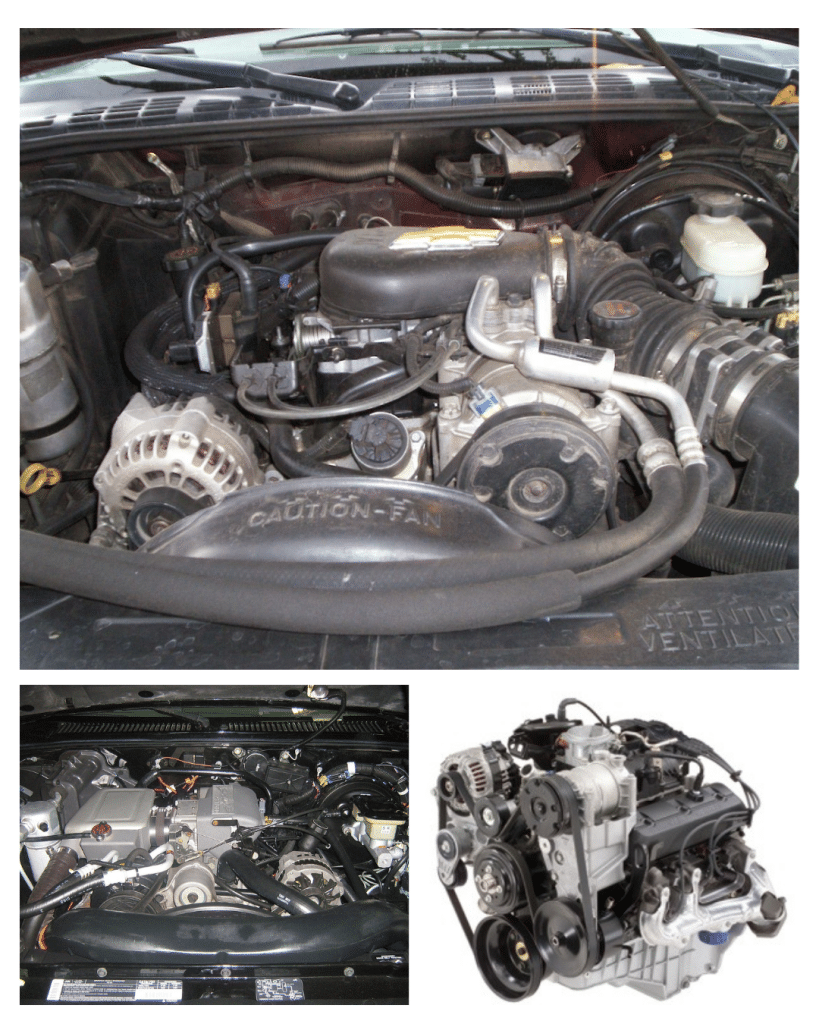
Vehicles: Chevy S-10 and Blazer, C/K and Silverado pickups, Astro/Safari vans, GMC Syclone/Typhoon, and many more GM cars/trucks.
Why It’s Underrated:
Essentially a “3/4 of a small-block 350” (literally the 350 V8 minus two cylinders), the 4.3 V6 combined V8 DNA with a V6’s thrift. It never had the spotlight like Chevy’s V8s, but ask anyone who’s owned one – these engines are rock-solid and torquey. With a cast-iron block and heads, they’re known to surpass 200-300k miles routinely. They often powered “boring” vehicles like work trucks and family vans, so they didn’t get much love. But in turbocharged form (see GMC Syclone/Typhoon), the 4.3 showed it could be downright fearsome, embarrassing sports cars of its era.
75% of a 350, 100% reliability
- The GMC Syclone (1991) and Typhoon (’92–’93) used a turbo 4.3L V6 to achieve 0–60 in about 4.3 seconds (the quickest accelerations in the world for a truck at the time).
- Most 4.3s, however, lived a quieter life, hauling kids or cargo. Owners often joke that the 4.3 will last longer than the vehicle’s body.
- In the marine world, 4.3s power countless boats. In short, the Chevy 4.3 V6 is “not a powerhouse, but boy, will they last forever”. It’s a reliable mule that rarely gets its due respect.
14. Buick 3.8L Turbo V6 (1984–1987 Grand National/GNX)

Vehicles: Buick Grand National + Regal T-Type (1984–87), GNX (’87), similar tech used on the 1980–81 Pontiac Turbo Trans Am.
Why It’s Underrated:
In an era of weak smog-era V8s, Buick slapped a turbo on their old 3.8L V6 and built a muscle car that could outrun Ferraris. The ’87 GNX was rated 276 hp and 360 lb-ft but was really over 300 hp. Purists mocked a V6 muscle car at the time, so history never gave it full credit — yet this engine proved you didn’t need eight cylinders to dominate.
Criminally Underrated
- Buick purposely underrated the GNX so it wouldn’t overshadow the Corvette. With light mods, these cars run 12s in the quarter. T
- he strong bottom end takes big boost, and many make 500+ hp on stock internals.
- The 3.8 Turbo V6 was way ahead of domestic tech then — fuel injection, computer ignition, and big boost — and the all-black look made the Grand National an instant 80s legend.
15. Ford 2.3L Turbo “Lima” Four (1983–1989 Turbo Models)
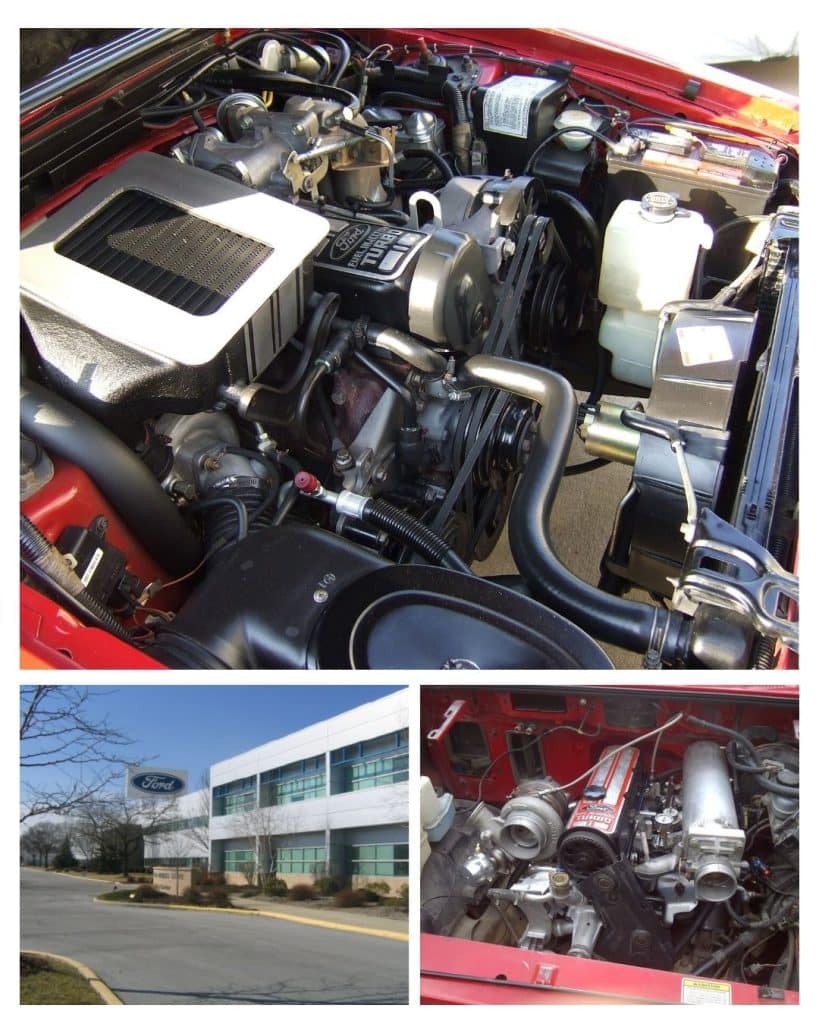
Vehicles: Ford Mustang SVO (’84–’86), Thunderbird Turbo Coupe (’83–’88), Mercury Merkur XR4Ti (Euro Ford Sierra XR4Ti, ’85–’89), and some turbo Ranger pickups.
Why It’s Underrated:
Long before EcoBoost 4-cylinders were common, Ford experimented with a turbocharged 2.3L overhead-cam four in performance cars. The Lima 2.3 Turbo (named after its Ohio engine plant) showed that a small engine could punch above its weight – the Mustang SVO made 175–205 hp, matching the V8 GTs of its time, but with better handling due to less weight up front. It’s underrated because it lived in the shadow of the V8 and the later turbo imports; many muscle car folks didn’t take it seriously in the ’80s.
Did you know?
- The 2.3 Turbo was derived from Ford’s workhorse Pinto engine, heavily fortified for boost. It proved nearly indestructible – there are tales of rally racers cranking these up to outrageous power levels.
- Enthusiasts have affectionately called it “Turbo Pinto” power. One commenter described Ford’s 2.3 (turbo or not) as “great engines – dang near bulletproof.”
16. Ford 3.0L “SHO” V6 (1989–1995)
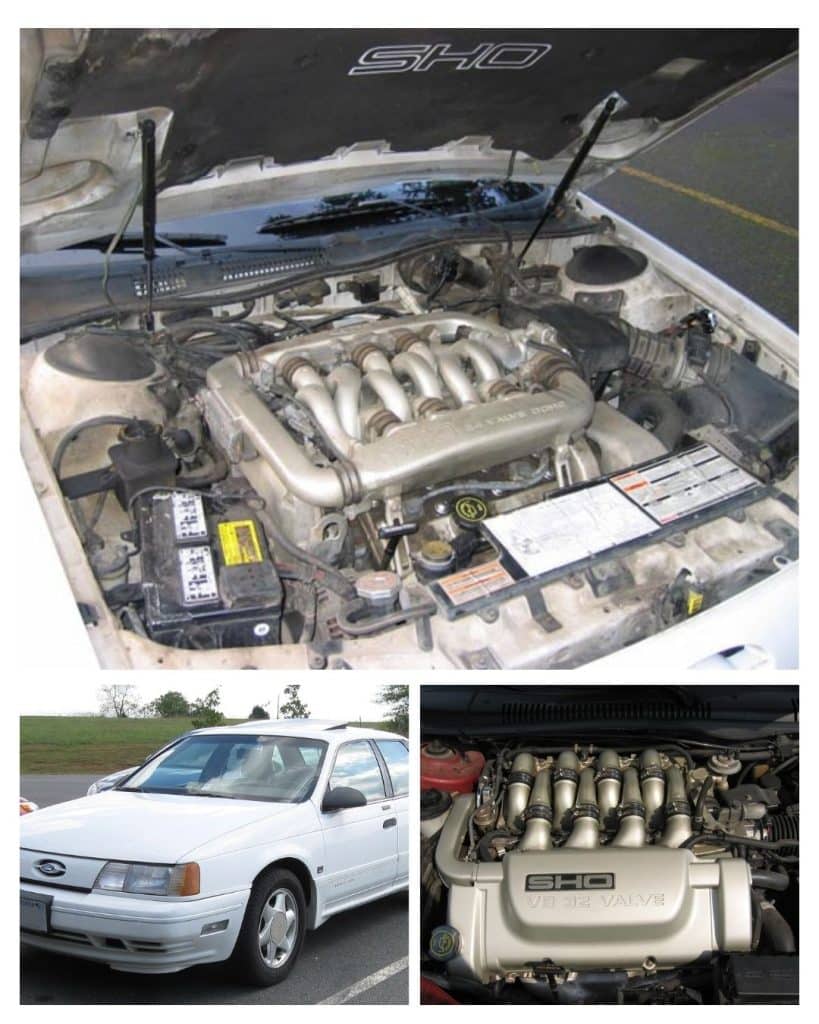
Vehicles: Ford Taurus SHO (Super High Output) – the high-performance sport sedan variant of the Taurus.
Why It’s Underrated:
In the late ’80s, Ford stunned the world by dropping a Yamaha-designed 24-valve DOHC V6 into an ordinary Taurus family sedan. The result: a stealthy four-door that could outrun BMWs and hang with some muscle cars. The 3.0L SHO V6 made 220 hp and revved to 7,000 rpm, unheard of for an American sedan in 1989. It turned the Taurus into a genuine sleeper – 0–60 in 6.7 seconds and a 143 mph top speed. Despite rave reviews, the SHO V6 remains a bit of a forgotten marvel, overshadowed by Mustang V8s and later import tuners. It’s underrated because many don’t realize Ford had an exotic, high-revving V6 in a family car back when such things were rare.
Fun Facts & Traits:

- A fun bit of lore: a tuning shop and Chuck Beck built several “SHOGun” Festivas, which were tiny Ford Festiva hatchbacks with the SHO V6 mounted in the rear – creating a mini-supercar that Jay Leno famously owns. .
- The SHO V6’s aluminum intake manifold was a thing of beauty – so much so that owners often didn’t want to cover it with the engine shroud
17. Cadillac 4.6L Northstar V8 (1993–2011)

Vehicles: Cadillac Allanté, Seville STS, Eldorado ETC, DeVille Concours, plus the Oldsmobile Aurora 4.0 (related design) and even the Shelby Series 1 sports car.
Why It’s Underrated:
The Northstar V8 was Cadillac’s attempt to reignite the glory days of advanced engines. Debuting with up to 295 hp (in 1993), this all-aluminum 32-valve V8 gave Cadillac instant credibility against BMW and Lexus. It had DOHC heads, coil-on-plug ignition, and even a clever “limp-home” mode that could run the engine without coolant by alternately firing cylinders. So why is it underrated? Early models had issues (notorious head-gasket troubles), which hurt its reputation.
The Northstar Was Ahead of It’s Time
- The Northstar introduced features like stall-free accessory belts and direct coil ignition to GM’s lineup.
- Its “Limp Home” feature could keep the engine running for about 50 miles with no coolant by pausing cylinders (so they pump air to cool off) – a party trick in case of a radiator leak.
- In 2004, the Northstar powered Cadillac’s first 21st-century V-Series cars with a supercharger, making nearly 470 hp.
18. GM 4.2L “Atlas” Inline-6 (2002–2009)
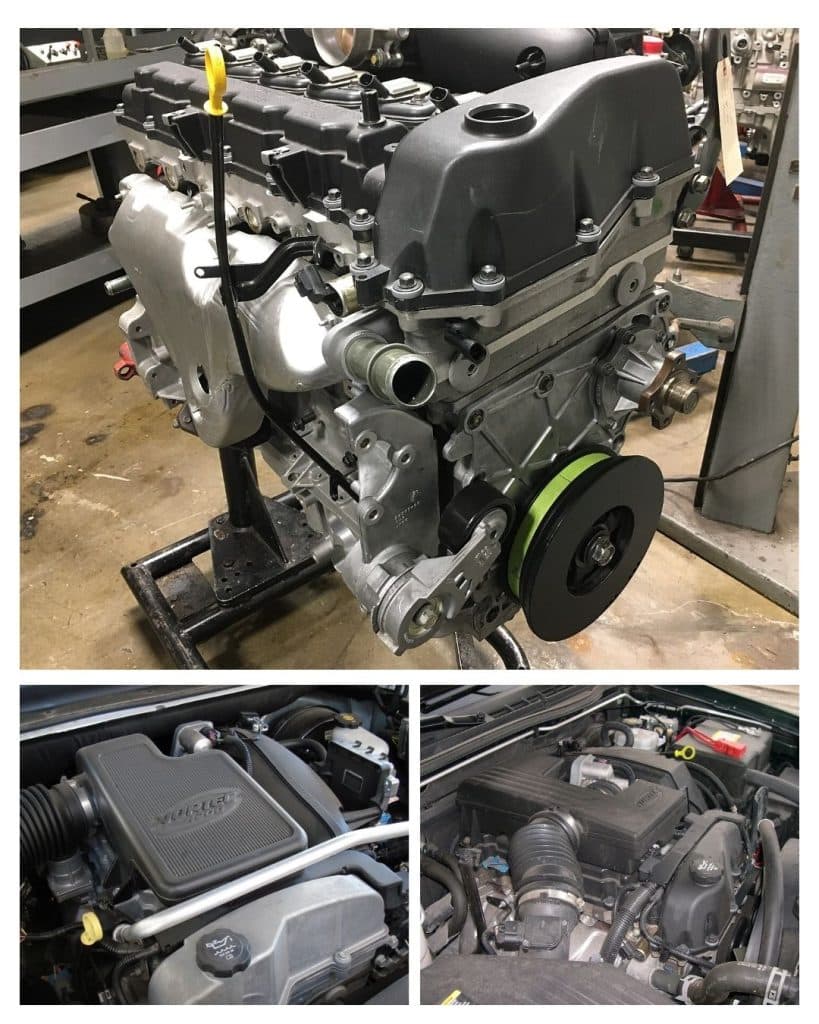
Vehicles: Chevrolet TrailBlazer, GMC Envoy, Oldsmobile Bravada, Buick Rainier, Saab 9-7X, and related mid-size SUVs.
Why It’s Underrated:
Who puts a big inline-6 in an SUV when V8s and V6s are the norm? But GM’s 4.2L Vortec (codename LL8) was a technical tour de force: all-aluminum, variable valve timing, making 270 hp (rising to 291 hp) – that was V8-level power with I6 smoothness. It even won Ward’s 10 Best Engines multiple years. Sadly, it was confined to the SUV platform and disappeared after 2009, not finding its way into cars or pickups where it might have really shined. It’s underrated because it’s largely forgotten outside of TrailBlazer owners, yet it was one of the best American six-cylinders ever in terms of design and performance.
Did ya know?
- The Atlas 4.2L was sometimes dubbed the “American 2JZ” (a nod to Toyota’s legendary Supra six) for its robust block and twin-cam design – in fact, enthusiasts have built turbo versions pushing 600+ hp reliably.
- This engine was so good it won Baja races right out of the gate: a TrailBlazer with the 4.2 won its class in the Baja 1000 its first time out, even beating some V8s.
19. Volkswagen Air-Cooled Flat-Four (1938–2003)
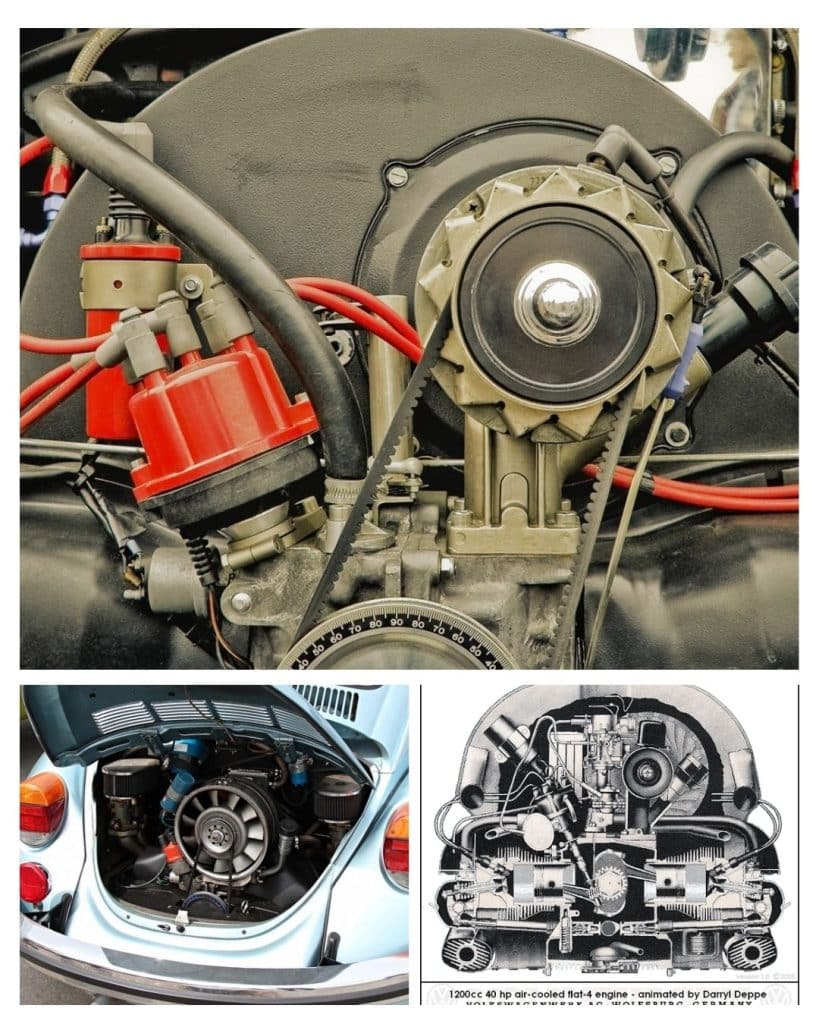
Vehicles: VW Beetle, Microbus (Type 2), Karmann Ghia, Type 181 “Thing”, and even early Porsche 356 and 912 (derivatives of this engine).
Why It’s Underrated:
Tthe VW air-cooled boxer Volkswagen Air-Cooled Flat-Foure. Americans know it well from the hippie vans and Beetles of the 60s and 70s. It was simple and low-powered (36–60 hp in most classic versions). But here’s why it’s underrated: with the right mix of parts, this little boxer has serious performance potential. Hot-rodders and dune buggy builders discovered you could bore, stroke, and even turbocharge it to surprise levels of power. Meanwhile, its simplicity meant anyone with a basic tool set could keep it running.
Simple, Easy to Work on, and Timeless
- Easy to work on? These engines ended up not only in cars but also in boats, generators, aircraft, and trikes!
- In drag racing, highly modified VW flats have run 10-second quarter miles, which is astonishing for an engine design from the 1930s. And of course, Porsche took this flat-four concept and refined it – but the basic DNA is shared.
20. Toyota 4.0L 1UZ-FE V8 (1989–2002)
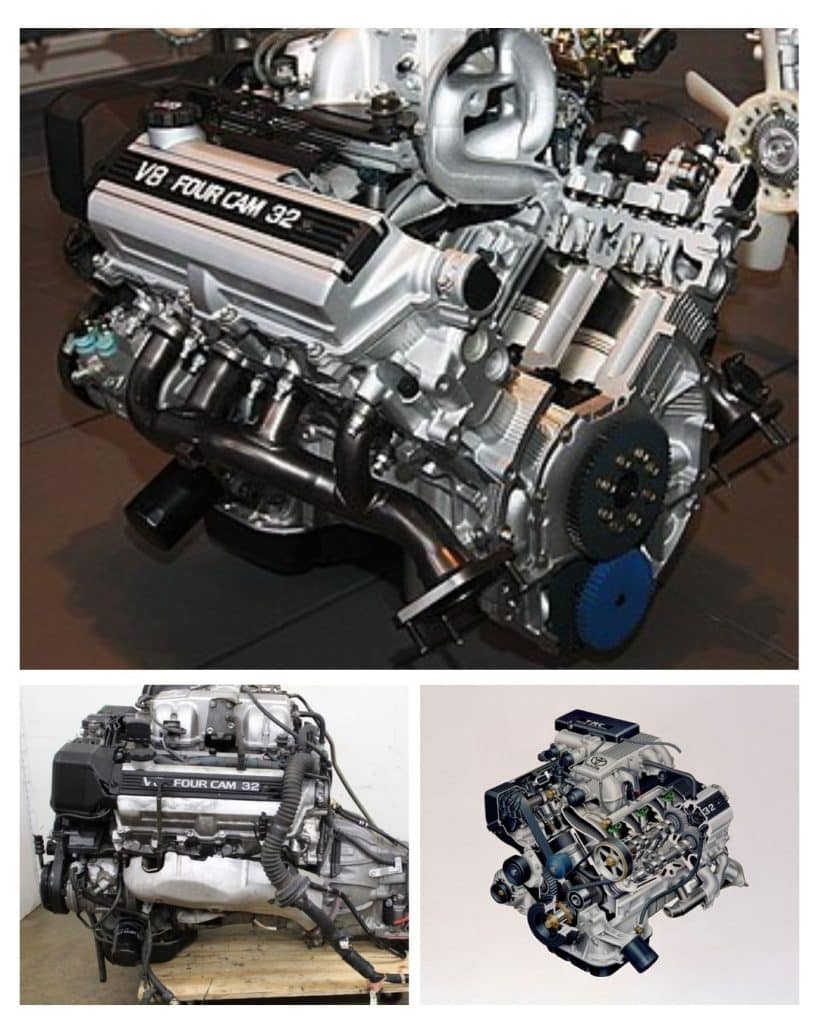
Vehicles: Lexus LS400, GS400, SC400, Toyota Crown Majesta (Japan).
Why It’s Underrated:
The 1UZ-FE was massively over-engineered and never got mainstream tuner hype like the 2JZ or RB26. The original LS400 made 256 hp, ran silky smooth, and instantly cemented Lexus as a quality brand. These V8s routinely run forever, and when modified, they can make huge power while staying reliable. It’s still a sleeper bargain vs more famous V8s.
Just Won’t Die
- Often called a “million-mile engine”—many examples exceed 500k miles. It runs 6-bolt mains and a forged steel crank, so it loves boost (500–600 hp on stock internals isn’t unusual).
- Despite being a quad-cam V8, it’s compact and surprisingly light, making it a popular “Japanese LS swap.” Drifters and racers eventually figured out how good this thing really was.
Still here? Thanks for reading!
